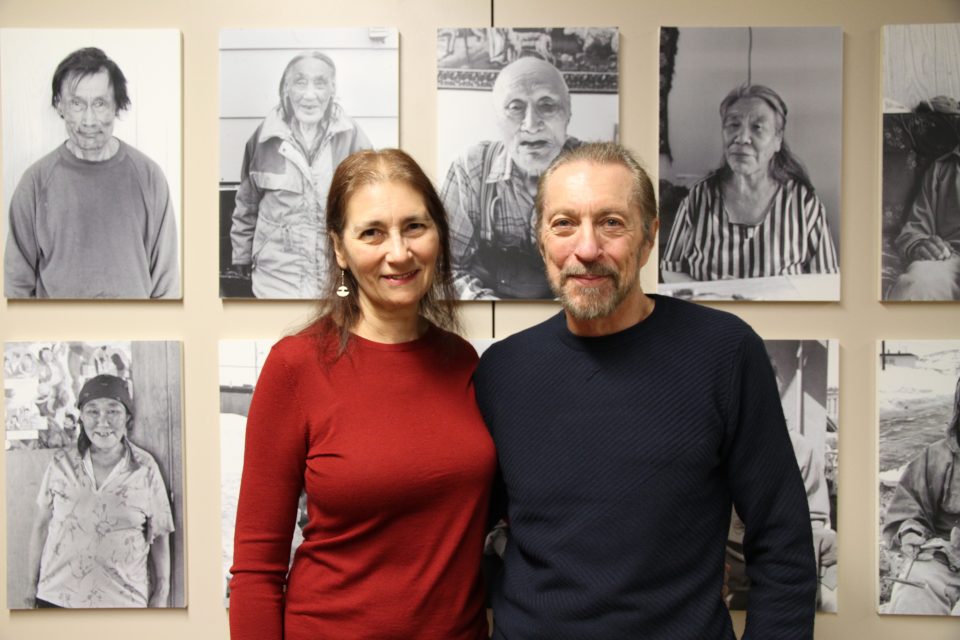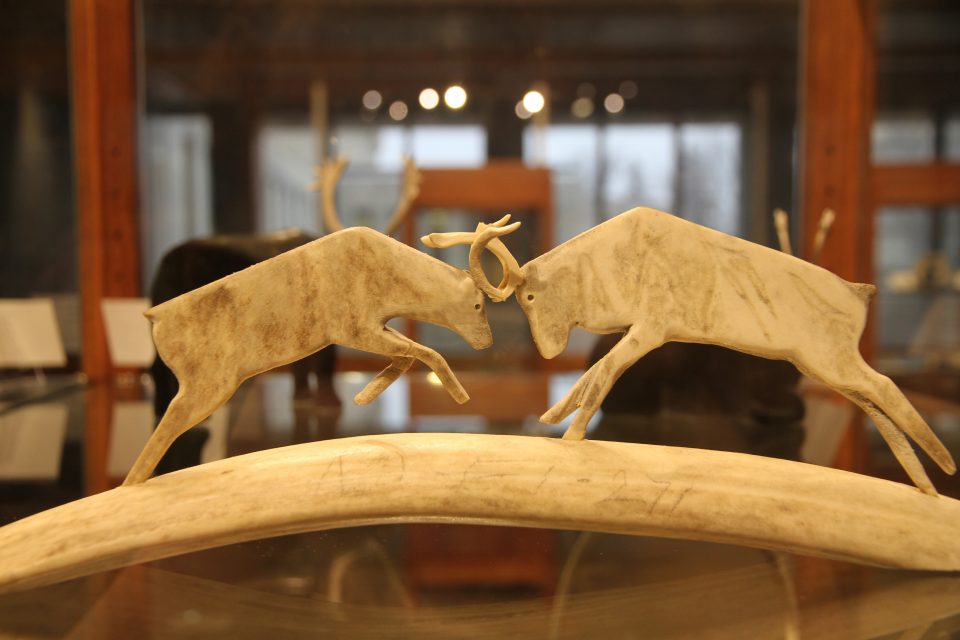
In from the cold: new Inuit art collection fires imagination in the university library
A new art collection, donated to the university’s library, has a cold and snowy beginning. Norman Zepp (BA ’76) and his wife Judith Varga (BA ’76) have travelled the northern-most part of Canada to research the art created by the Inuit people and have cultivated a nationally-recognized collection over the course of nearly 50 years.
By Sean ConroyThe donation includes over 200 sculptures, dozens of prints and drawings, five wall hangings, a vast set of photographs and original interviews with the Inuit artists—predominantly from the Keewatin region of Nunavut.
"This would be a remarkable collection even if the art weren't included," noted Tim Hutchinson, university archivist. "The interviews and archival material provide unique insight into the lives of Canada's northern artists—indeed it is likely the only in-depth documentation available about many of the artists. This is an invaluable addition to our research collections focusing on the North."
Zepp, an independent art curator and expert in Inuit art, started collecting when he first attended the University of Saskatchewan (U of S) as an art history student, in 1969. Peter Millard, an English professor who was influential in the arts community, introduced him to the works of the Inuit people, and Zepp was hooked.
"I've always had an instinct for art," said Zepp. "I wasn't aware of this style before then, and I immediately went to the Mendel (art gallery) and bought my first piece."
Thus began a lifetime studying and working with the Inuit people and their creations. Zepp specialized in Inuit art through his masters of Canadian studies, from the University of Ottawa. While a curator at the Mackenzie Art Gallery in Regina he organized several exhibitions, showcasing the northern creations he had grown so fond of. He also established the Inuit art department for the Art Gallery of Ontario and helped found the Inuit Art Museum in Toronto in 1985.
Zepp's research trips to Nunavut, at times accompanied by Varga, helped him develop relationships with the artists and learn about the origins of their artwork. "They welcomed us into their homes, so we got to know them," said Zepp, who noted how worthwhile it was to observe the blending of traditional and contemporary culture, which informed their art.
For instance, some of the most iconic pieces in the collection are the detailed carvings of caribou. Zepp said the Inuit people of the Keewatin region relied heavily on the animal for their existence—for food, clothing, shelter and tools— and the reverence for the animal is reflected in the art. "There are 40 different renderings of the caribou by some of the north's finest artists," said Zepp. "It's such a noble creature and a magnificent subject matter."

Not only has Zepp brought his lifetime of work to live at the University of Saskatchewan, he has also shared his expertise with the university, by curating other notable Inuit art donations. In 2015 he helped the University Art Collection showcase a collection of Inuit art sculptures donated to the Edwards School of Business by alumnus Sam Schwartz. He also curated the Henry and Cheryl Kloppenburg Collection of Inuit Sculpture which was gifted to the College of Agriculture and Bioresources in 2011.
President Peter Stoicheff noted how important this gift is to the university's Inuit art collection. "Although we've been collecting Indigenous art for decades, in the last few years our collection of Inuit art has expanded impressively in scope," he said. "Thanks to this donation, we now have a comprehensive overview of this important aspect of Canadian art. Visual art is so important to our campus community, and I'm excited to see how students and researchers use this collection in their work."
Zepp said it is fulfilling to bring his and Judith's personal collection to help students at their alma mater. The idea was first proposed to Zepp and Varga by University Archives and Special Collections, and the couple agreed.
"I'm flattered they approached me. It's rewarding to present the artwork on campus," said Zepp. "The U of S has always treated Inuit art collections seriously, and I am impressed with how it's been displayed. I appreciate that the university can put most of its art collection in front of its community."

Charlene Sorensen, interim dean, agreed. "With the published collections of university libraries being increasingly based on electronic resources, it is rare and unique collections like this one that set us apart," she noted. "We are so thankful to Norman and Judith for entrusting the University Library with this collection. I look forward to a time when we will be able to have much of the art on permanent display, as an inspiration for students and other visitors to University Archives & Special Collections."
The Norman Zepp-Judith Varga Collection exhibit is in the Link area of Murray Library until the end of January 2017, and will be available for students and researchers to use in their work through University Archives and Special Collections.
Learn more about the collection in the University Archives and Special Collections in this special video, narrated by Norman Zepp.

